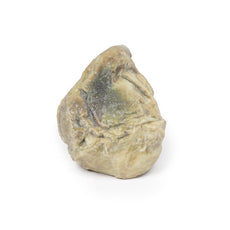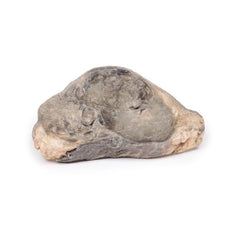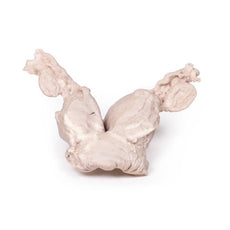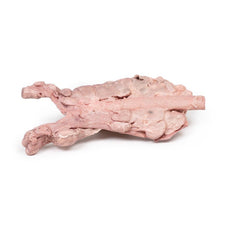Your shopping cart is empty.
3D Printed Suppurative Arthritis of the Knee
Item # MP2119Need an estimate?
Click Add To Quote

-
by
A trusted GT partner -
3D Printed Model
from a real specimen -
Gov't pricing
Available upon request
3D Printed Suppurative Arthritis of the Knee
Clinical History
A man aged 82 years had a history of tuberculosis of the left knee in
childhood. He developed a painful swollen knee 10 days prior to admission to hospital. Examination revealed an
inflamed knee, painful to move, which improved slightly with antibiotic therapy and rest. X-ray showed a
disorganized knee joint and mid-thigh amputation was performed 3 days after admission. P
3D Printed Suppurative Arthritis of the Knee
Clinical History
A man aged 82 years had a history of tuberculosis of the left knee in
childhood. He developed a painful swollen knee 10 days prior to admission to hospital. Examination revealed an
inflamed knee, painful to move, which improved slightly with antibiotic therapy and rest. X-ray showed a
disorganized knee joint and mid-thigh amputation was performed 3 days after admission. Post-operative recovery was
satisfactory.
Pathology
The specimen displays the articular surfaces of a femur and tibia. The articular
surfaces have been severely eroded. They are brown in colour, very irregular, and there are shaggy adhesions and
plaques of yellow necrotic material. No normal articular cartilage is present. Some irregular varying in size bony
projections (up to 1 cm in diameter) are present on the femoral condyles. Staphylococcus aureus was cultured from
the joint. This is an example of suppurative arthritis in a joint previously damaged by tuberculosis.
Further Information
Suppurative arthritis is typically caused by a bacterial infection in the
joint. Diagnosis is made by analysis of synovial fluid including microscopic examination and culture. Suppurative
arthritis is also referred to as pyarthrosis, and bacterial or septic arthritis. Tuberculous septic arthritis should
be considered in patients who present with acute or chronic monoarthritis, and who have an abnormal chest radiograph
or eosinophilia or a previous history of TB.
Pulmonary tuberculosis accounts for around 52% of tubercular infection but musculoskeletal involvement is seen in up to 19% of cases.1 It is more common in children than in adults, probably owing to the greater amount of bone marrow present in immature bone. In adults, TB shows a preponderence to the spine (40%), followed by the hip (25%), and then the knee (8%).While extrapulmonary manifestations of TB are common, accounting for around 15–20% of cases in immunocompetent patients, the first presentation of the disease as a joint infection is rare[1].
Reference
1. Carrol ED, Clarke JE, Cant AJ. Non-pulmonary tuberculosis. Paediatr Respir Rev. 2001;2:113–9.
 Handling Guidelines for 3D Printed Models
Handling Guidelines for 3D Printed Models
GTSimulators by Global Technologies
Erler Zimmer Authorized Dealer
The models are very detailed and delicate. With normal production machines you cannot realize such details like shown in these models.
The printer used is a color-plastic printer. This is the most suitable printer for these models.
The plastic material is already the best and most suitable material for these prints. (The other option would be a kind of gypsum, but this is way more fragile. You even cannot get them out of the printer without breaking them).The huge advantage of the prints is that they are very realistic as the data is coming from real human specimen. Nothing is shaped or stylized.
The users have to handle these prints with utmost care. They are not made for touching or bending any thin nerves, arteries, vessels etc. The 3D printed models should sit on a table and just rotated at the table.

























































































